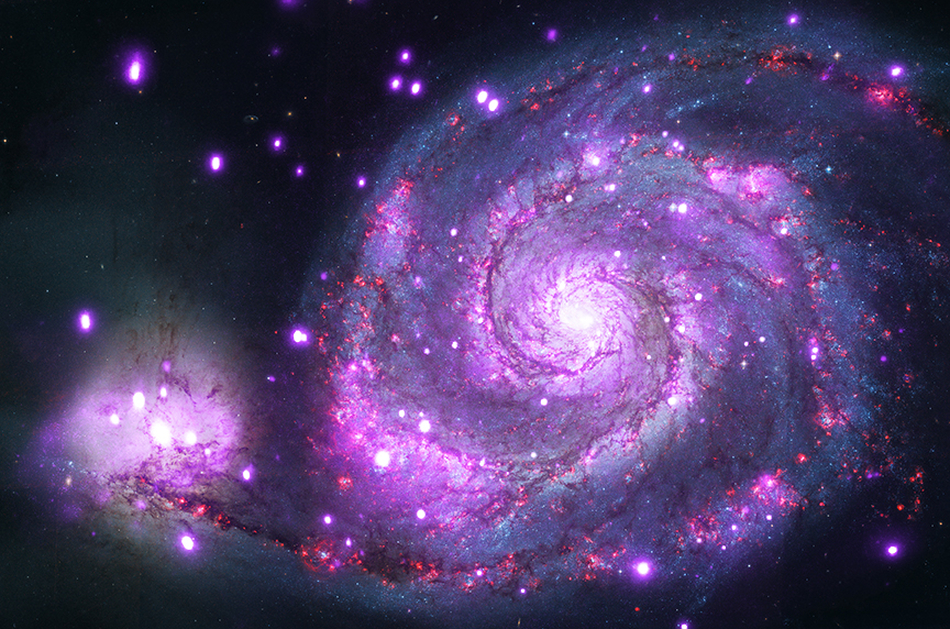
 Credit: X-ray: NASA/CXC/Wesleyan Univ./R.Kilgard, et al; Optical: NASA/STScI
Credit: X-ray: NASA/CXC/Wesleyan Univ./R.Kilgard, et al; Optical: NASA/STScI
ChandraXX: Whirlpool Bath
The high-resolution pictures of the X-ray sky obtained by the Chandra X-ray Observatory over the past 20 years have helped revolutionize our knowledge of the high-energy Universe. Chandra's images allow astronomers to disentangle emission from crowded regions and get a better understanding of the population of black holes, neutron stars and flaring sources distributed through space. An excellent example is the Chandra X-ray image of the
Whirlpool Galaxy, a grand design spiral galaxy in the constellation of Canes Venatici (the "hunting dog"). Because the Whirlpool is only 30 million lightyears away from us, and we view it face-on, we can study the structure of the Whirlpool in detail, and learn about the structure of spiral galaxies and the processes that shape them. The Whirlpool is also merging with a smaller neighbor galaxy, seen to the left of the image, and so offers astronomers the opportunity to understand how such galaxy-galaxy interactions work. The Chandra X-ray image is shown above in purple, and is superimposed on an optical image from the Hubble Space Telescope. The Chandra image has an exposure time of over 1 million seconds making it the deepest, clearest X-ray image of the Whirlpool yet obtained. It shows how hot diffuse gas produced by extremely energetic processes like supernovae explosions permeates the spiral arms, and has allowed astronomers to identify over 500 individual sources of X-rays in the Whirlpool (about a factor of five more than previously known). Most of the identified sources turn out to be X-ray emitting binary stars composed of compact neutron stars stripping material from a either a low- or high-mass normal companion star, while others are binaries composed of accreting black holes. This X-ray/optical comparison helps show how high-energy processes like supernovae and shock waves help shape spirals galaxies like our own Milky Way.
Published: August 26, 2019
<
HEA Dictionary ● Archive
● Search HEAPOW
● Other Languages
● HEAPOW on Facebook
● Download all Images
● Education ● HEAD
>

Each week the HEASARC
brings you new, exciting and beautiful images from X-ray and Gamma ray
astronomy. Check back each week and be sure to check out the HEAPOW archive!
Page Author: Dr. Michael F. Corcoran
Last modified Tuesday, 27-Feb-2024 10:06:54 EST


